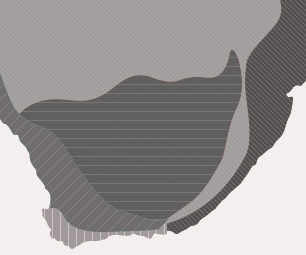Bulb
Lachenalia pustulata Jacq.
Family:
Common names: common viooltjie
Plant Attributes:
Plant Type:
SA Distribution:
Soil type:
Flowering season:
PH:
Flower colour:
Aspect:
Gardening skill:
Special Features:
Horticultural zones

Lachenalia orchioides (L.) Ait.
Family:
Common names: (L. orchioides var. orchioides): wild hyacinth (Eng.), groenviooltjie (Afr.); (L. orchioides var. glaucina (Jacq.) W.F.Barker): blue wild hyacinth (Eng.), blouviooltjie (Afr.)
Plant Attributes:
Plant Type:
SA Distribution:
Soil type:
Flowering season:
PH:
Flower colour:
Aspect:
Gardening skill:
Special Features:
Horticultural zones

Lachenalia liliflora Jacq.
Family:
Common names: Cape hyacinth (Eng.); viooltjie (Afr.)
Plant Attributes:
Plant Type:
SA Distribution:
Soil type:
Flowering season:
PH:
Flower colour:
Aspect:
Gardening skill:
Special Features:
Horticultural zones

Lachenalia sargeantii W.F.Barker
Family:
Common names: none
Plant Attributes:
Plant Type:
SA Distribution:
Soil type:
Flowering season:
PH:
Flower colour:
Aspect:
Gardening skill:
Special Features:
Horticultural zones

Lachenalia orthopetala Jacq.
Family:
Common names: straight-petal lachenalia, Cape hyacinth (Eng.); viooltjie (Afr.)
Plant Attributes:
Plant Type:
SA Distribution:
Soil type:
Flowering season:
PH:
Flower colour:
Aspect:
Gardening skill:
Special Features:
Horticultural zones

Lachenalia mathewsii W.F.Barker
Family:
Common names: Vredenberg lachenalia, Mathews' lachenalia (Eng.); geelviooltjie (Afr.)
Plant Attributes:
Plant Type:
SA Distribution:
Soil type:
Flowering season:
PH:
Flower colour:
Aspect:
Gardening skill:
Special Features:
Horticultural zones

Lachenalia valeriae G.D.Duncan
Family:
Common names: viooltjie (Afrikaans)
Plant Attributes:
Plant Type:
SA Distribution:
Soil type:
Flowering season:
PH:
Flower colour:
Aspect:
Gardening skill:
Special Features:
Horticultural zones

Lachenalia pygmaea (Jacq.) G.D.Duncan
Family:
Common names: none recorded; suggested name: pygmy hyacinth
Plant Attributes:
Plant Type:
SA Distribution:
Soil type:
Flowering season:
PH:
Flower colour:
Aspect:
Gardening skill:
Special Features:
Horticultural zones

Lachenalia neilii W.F.Barker ex G.D.Duncan
Family:
Common names: kleuterviooltjie (Afr.)
Plant Attributes:
Plant Type:
SA Distribution:
Soil type:
Flowering season:
PH:
Flower colour:
Aspect:
Gardening skill:
Special Features:
Horticultural zones

Lachenalia lutea G.D. Duncan
Family:
Common names: common dwarf yellow viooltjie
Plant Attributes:
Plant Type:
SA Distribution:
Soil type:
Flowering season:
PH:
Flower colour:
Aspect:
Gardening skill:
Special Features:
Horticultural zones






Rate this article
Article well written and informative
Rate this plant
Is this an interesting plant?
Login to add your Comment
Back to topNot registered yet? Click here to register.